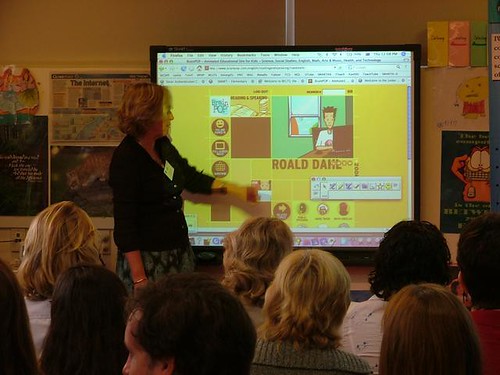I was just doing a tidy-up of my hard drive and I found this video that I’d almost forgotten about, so I thought I’d put it up on YouTube so I know where to find it in future.
Back in 2006, I spent a year teaching in Oakville, Canada, as part of a teaching exchange. I really enjoyed the whole experience, which was life-changing in many ways. In fact, I’m back in Toronto at the moment and despite the -24 degree temperatures this really is like my second home.
When you go on a teaching exchange you act as somewhat of an ambassador for your country, taking whatever opportunities you can to share some of the culture of your own country with the locals. So one day, I decided to let my Grade 9 BTT101 class experience the classic Australian taste of Vegemite. Most Aussie kids grow up with Vegemite, a yeast based spread that usually goes on toast, crumpets and crackers. Seeing the reaction of non-Aussies makes me realise that it’s somewhat of an acquired taste, but it’s savoury, salty, yeasty taste is actually quite yummy when you’re used to it.
Of course, I managed to tie it into the syllabus, teaching a lesson on computer basics and the concept of input, processing and output… I brought a toaster and a loaf of bread into class, and we dicussed how bread was the input, the toasting was the process and the toast was the output. Input, Process, Output.
Of course, once we had made some toast we couldn’t waste it, so out came the Vegemite and the kids had a taste. Although I love the taste of Vegemite, apparently these Canadian kids didn’t think so. Still, although they weren’t big Vegemite fans, I was pleased that they at least tried it.
Fortunately I captured their reaction on video. 🙂

 I don’t normally make requests like this but if you are reading this and you teach using any sort of Interactive Whiteboard, I have a small favour to ask…
I don’t normally make requests like this but if you are reading this and you teach using any sort of Interactive Whiteboard, I have a small favour to ask… One of the new year’s resolutions that Linda and I made for 2008 is to try and be a little kinder to the planet; whether that be to walk and cycle more instead of driving, to buy products that are more environmentally friendly, or to make an effort to generate less waste… even small changes may help the planet. If we can encourage a few others to do the same, it may help even more.
One of the new year’s resolutions that Linda and I made for 2008 is to try and be a little kinder to the planet; whether that be to walk and cycle more instead of driving, to buy products that are more environmentally friendly, or to make an effort to generate less waste… even small changes may help the planet. If we can encourage a few others to do the same, it may help even more.